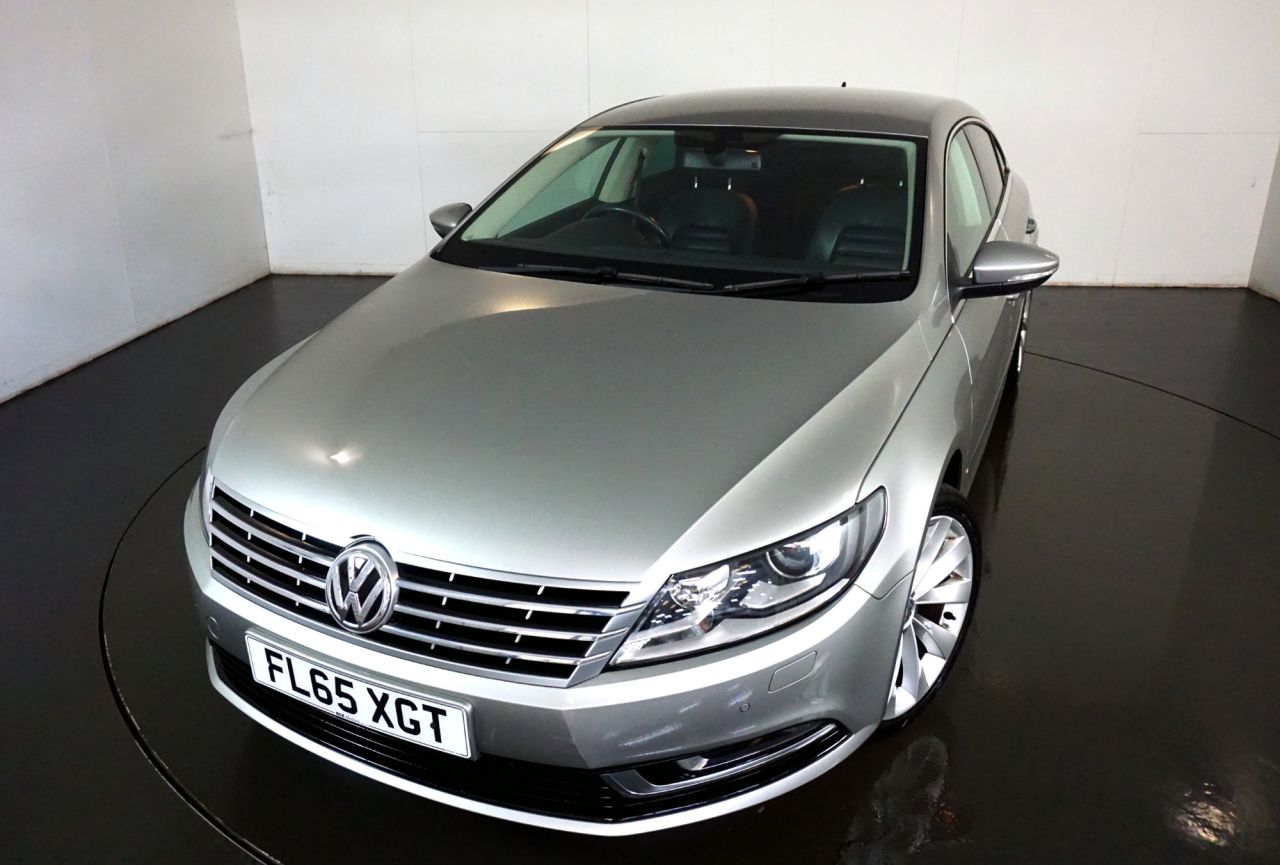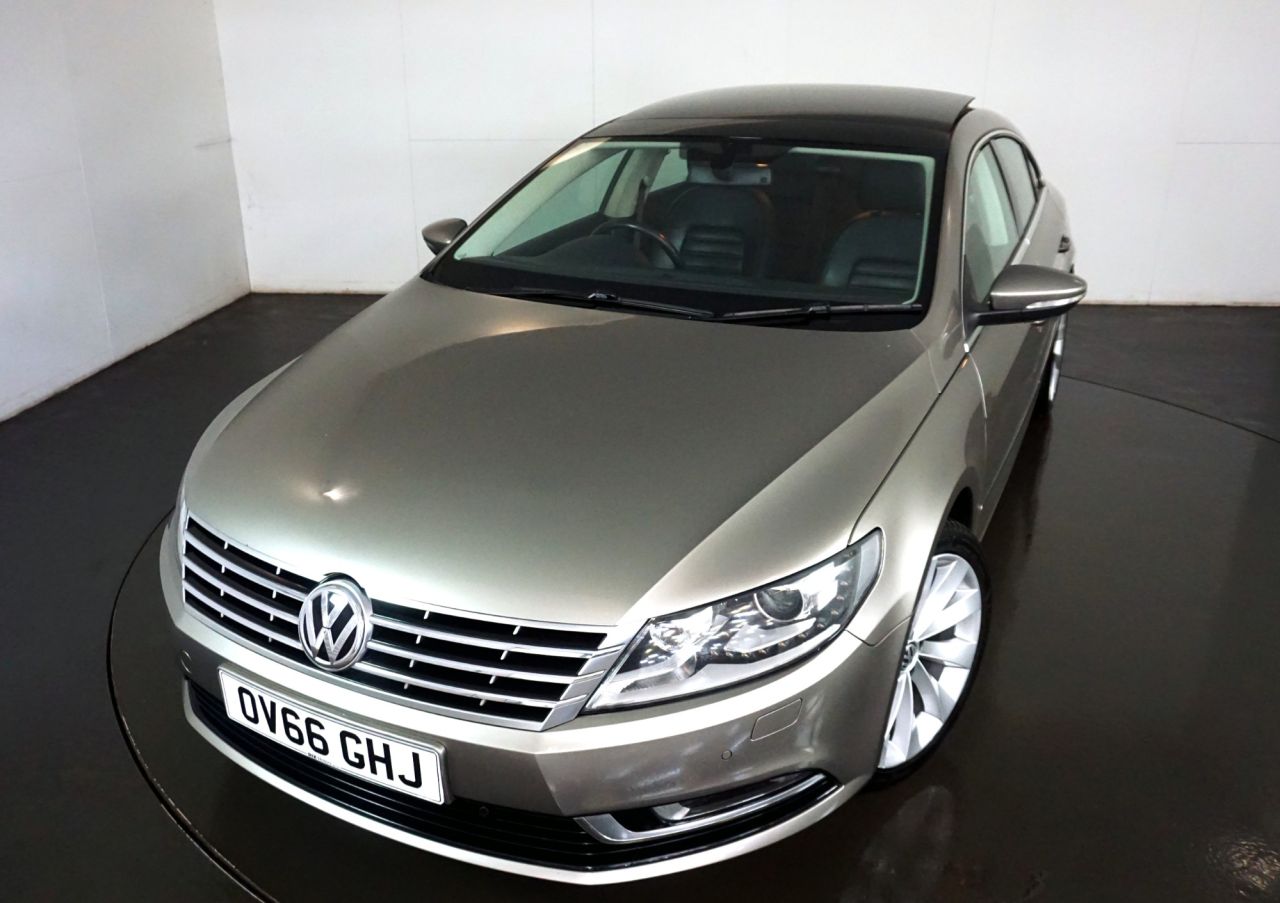Used Volkswagen CC for sale: everything you need to know
The late 2000s saw an influx of new cars described as ‘four door coupes’ - essentially, saloons with a more dramatic roofline that traded some practicality for a little more style. The Volkswagen Passat CC was among the first, making its debut in 2008, with the model then renamed the Volkswagen CC at its 2012 facelift until it went off sale in 2016.
That’s the car you see here, and while the earliest examples are now more than a decade old, the CC still looks fresh. If you need the practicality and economy offered in abundance by the regular Passat but also need to feel just a little special each time you take a glance at the driveway, then the CC could be the car for you.
The CC was replaced by the Volkswagen Arteon in 2017 and if you’ve got the budget, that’s also worth a look. The Audi A5 Sportback and BMW 4 Series Gran Coupe are the most direct alternatives, while earlier examples of that other four-door coupe pioneer of the 2000s, the Mercedes-Benz CLS, are now very affordable too.
Should you buy a Volkswagen CC?
Like its successor, the Volkswagen Arteon, the Passat CC is the ideal car for someone who doesn’t want to abandon the idea of practical transport entirely - leading you down the road of a conventional coupe, or roadster, or similar - but also doesn’t need a full five seats or vast carrying capacity. After all, regular saloons, estates, and SUVs will handle that.
The CC is somewhere in the middle, broadly as practical as a saloon but more stylish thanks to its swooping roofline. It’ll still seat four adults comfortably, and as a family car kids will have no problems in the back - though the slim windows mean it might feel a little gloomy compared to a regular saloon. And the centre seat is largely useless - treat the CC as a four-seater with a decent (532-litre) boot and you’ll be fine.
The cabin design itself isn’t the most interesting but in true VW style it’s well-built and logically laid out, while the standard well-bolstered sports seats are comfortable despite fairly firm cushions. The view forwards is fine but it’s a little restricted to the rear - making the parking sensors of GT spec and above well worth having.
To drive the CC does the job, riding firmly but not uncomfortably and having enough control that you can crack along at a decent rate with minimal effort. It’s not exciting as such, but the engines perform well and the XDS differential in more potent models keeps wheel-scrabble to a minimum.
If you do want more fun from your swoopy saloon then a BMW 4-Series is probably the closest alternative along a similar theme, and the badge appeal of the Audi A5 Sportback can’t be ignored either. A Volvo S60 of similar age has a similarly sporty profile but it too prioritises comfort over fun - and if you have the budget for something newer, the later Volkswagen Arteon is even more dramatically styled.
A Volkswagen CC not for you? We've got 1000s of used cars for sale to suit all budgets and needs
What’s the best used Volkswagen CC model to buy?
As far as the CC’s trim levels go, we’d aim for GT models and above when shopping. The regular CC is well equipped, but the GT’s front and rear parking sensors help make up for the tricky rearward visibility when parking, and the leather trim, privacy glass and larger alloy wheels all make it feel just a little more special, which surely is the point of choosing the CC over a regular Passat.
All the CC’s engines are pretty good so you can’t go too far wrong, but as usual the more powerful diesels give the car an effortless gait that suits its sleek styling, particularly with the DSG automatic gearbox. The TSI 210 is a rarer find, but worth snapping up if you do - the engine is the same as that in the contemporary Golf GTI, so it’s a strong performer and feels a little like a GTI in a smarter suit.
Used Volkswagen CC fuel economy and performance
- Volkswagen CC 1.4 TSI 150: Offered later in the CC’s run, the 1.4 TSI replaced the 1.8 TSI below, only a little less powerful at 150PS but notably more frugal on paper. It had six-speed manual or seven-speed DSG auto options, both with 8.9-second 0-62mph sprints. The manual could manage 49.6mpg combined, the DSG doing a little better with 50.4mpg.
- Volkswagen CC 1.8 TSI 160: Replaced by the 1.4 TSI above, the 1.8 TSI made more power at 160PS but lost out on economy, with 39.8 and 39.2mpg for the six-speed manual and seven-speed DSG auto models respectively. Acceleration was the same for both transmissions, at 8.5 seconds from 0-62mph.
- Volkswagen CC 2.0 TSI 210: The most powerful CC (in the UK at least) was the 2.0 TSI, making 210PS through six-speed manual or DSG transmissions, and getting from 0-62mph in 7.3 seconds. Combined economy was 38.7mpg for the manual, 36.2mpg for the DSG.
- Volkswagen CC 2.0 TDI 140: Replaced by the TDI 150, the 140PS diesel was a touch slower (9.8 seconds to 62mph for both manual and DSG variants), and a little less frugal (60.1mpg manual, 53.3mpg DSG).
- Volkswagen CC 2.0 TDI 150: Offered from 2015 onwards to replace the TDI 140, the 2-litre 150PS turbodiesel came in either six-speed manual or six-speed DSG auto forms, with identical 9.1-second 0-62mph times. The manual achieved 62.8mpg and the DSG 58.9mpg.
- Volkswagen CC 2.0 TDI 170: Superseded by the TDI 184 in 2015, the TDI 170 came as either a six-speed manual or DSG auto, each with an 8.6-second 0-62mph time. Combined economy was 57.6mpg and 51.4mpg respectively.
- Volkswagen CC 2.0 TDI 184: Another 2015-on engine, replacing the TDI 170, the most powerful 2-litre diesel made 184PS and whether manual or DSG, had an 8.1-second 0-62mph time. Fuel economy for the manual was 57.6mpg combined, with the DSG managing 56.5mpg.
What used Volkswagen CC trim levels are available?
Volkswagen made small adjustments to the CC’s specification during its time on sale but the range broadly included the three variants below, with the occasional special edition or colour theme. Equipment levels were strong across the range, though it’s worth noting that some features are engine-dependent, such as VW’s XDS differential lock - available only on TDI 170 and TSI 210 among earlier versions, and only on the TDI 184 for later models. Likewise, the standard infotainment system received a useful upgrade in features and size in later cars.
- The Volkswagen CC was the de facto entry-level CC but far from badly equipped. All CCs got a leather-trimmed steering wheel, a 5-inch touchscreen infotainment system with DAB, Bluetooth, MP3 and CD functions and an Aux-in (or in later models, a 6.5-inch touchscreen with navigation and a USB input), two-zone climate control, and 17-inch alloy wheels.
- The Volkswagen CC GT upgraded to Nappa leather upholstery, 18-inch alloys, privacy glass, brushed aluminium interior inserts, Adaptive Chassis Control, and front and rear parking sensors.
- The Volkswagen CC R-Line featured deeper front and rear bumpers and side skirts, R-Line badging, a different style of 18-inch alloy wheels, and a contoured and flat-bottomed steering wheel.
Used Volkswagen CC dimensions and boot size
The Volkswagen CC’s dimensions are:
- Length: 4802mm
- Width: 1855mm (without mirrors), 2090mm (with mirrors)
- Height: 1421mm
The Volkswagen CC’s boot size is:
Used Volkswagen CC road tax
All Volkswagen CCs predate the changes in VED or ‘road tax’ that brought in a flat rate in April 2017, which means all models have tax ratings based on their CO2 emissions. This puts diesel versions and the later 1.4 TSI at an advantage, and cheapest of all to tax should be the later 2.0 TDI 150 with the manual gearbox - its 118g/km rating means tax is currently just £35 per year. Several models are in the next band up with a £150 bill, while most expensive is the DSG-equipped 2.0 TSI 210, its 182g/km resulting in a £320 annual fee.
How much is it to insure a Volkswagen CC?
Insurance rates are about what you might expect for a car of the CC’s size and performance. The range as a whole spans insurance groups 23 to 32, with the early TDI 140 at the lower end of that scale and the TSI 210 in R-Line trim at the top. The later Volkswagen Arteon has very similar ratings, with a range covering groups 21 to 32.
Read our full Volkswagen CC review


